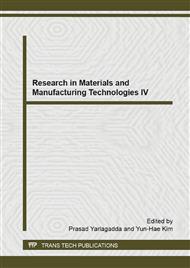p.151
p.155
p.162
p.166
p.170
p.175
p.180
p.184
p.189
Improvement of Interfacial Adhesion in PP/PS Blends Enhanced with Polyethylene-Polyamine Surface Treated Carbon Fiber
Abstract:
The effects of surface treatment of a carbon fiber (CF) by Polyethylene-polyamine (PEPA) on the interfacial adhesion behavior and morphology of polypropylene/polystyrene (PP/PS) matrix blends filled CF composites were investigated. Effects of surface treated a commercial CF on mechanical properties are studied. Contact angle was measured to examine the changes in wettability of the carbon fiber. The chemical and morphological changes were characterized by using X-ray photoelectron spectroscopy (XPS). PP/PS/CF composites were fabricated with and without PEPA treatment, and their interlaminar fracture toughnesses were compared. The results showed that the interlaminar shear strength (ILSS) of composites has been greatly improved filled PEPA modification CF. The water contact angle of resin sample decreased 50% after addition of PEPA surface treated CF.
Info:
Periodical:
Pages:
170-174
Citation:
Online since:
December 2014
Authors:
Keywords:
Price:
Сopyright:
© 2015 Trans Tech Publications Ltd. All Rights Reserved
Share:
Citation:


